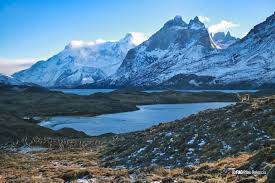Sustainable Agriculture Practices: Innovations for Food Security in North America
Introduction:
As the world continues to grapple with the challenges posed by climate change and environmental degradation, it is imperative that we adopt sustainable practices in agriculture to ensure food security for future generations. In North and South America, the need for innovative solutions to address contemporary issues in climate and environment has never been more urgent. By promoting unity between these regions, we can harness our collective abilities and work towards a brighter and more sustainable future. In this article, we will explore 15 important points on sustainable agriculture practices, with a focus on North and South America.
-
Conservation Agriculture: Conservation agriculture involves minimizing soil disturbance, maintaining permanent soil cover, and crop rotation. This approach not only reduces erosion and improves soil health but also helps to mitigate climate change by sequestering carbon in the soil.
-
Precision Agriculture: Precision agriculture utilizes technology such as drones, GPS, and sensors to optimize input usage, reduce waste, and increase productivity. By using these tools, farmers can precisely monitor and manage their crops, resulting in more efficient use of resources.
-
Agroforestry: Agroforestry combines the cultivation of trees with agricultural crops or livestock. This practice provides multiple benefits, including improved soil fertility, increased biodiversity, and mitigation of climate change through carbon sequestration.
-
Organic Farming: Organic farming avoids the use of synthetic fertilizers, pesticides, and genetically modified organisms. By relying on natural inputs and sustainable farming techniques, organic farmers protect the environment, preserve biodiversity, and produce healthier food.
-
Urban Farming: Urban farming involves growing crops and raising animals in cities, utilizing small spaces such as rooftops, balconies, and community gardens. This practice reduces the carbon footprint associated with transportation and increases access to fresh, locally grown produce.
-
Hydroponics and Aquaponics: Hydroponics and aquaponics are soil-less farming techniques that use water and nutrients to grow plants. These methods allow for year-round production, reduce water usage, and eliminate the need for synthetic fertilizers.
-
Crop Diversification: Diversifying crops helps to improve soil health, reduce pest and disease pressure, and increase resilience to climate change. By growing a variety of crops, farmers can also enhance food security and promote nutritional diversity.
-
Water Management: Efficient water management practices, such as drip irrigation and rainwater harvesting, can significantly reduce water usage in agriculture. By minimizing water waste, farmers can conserve this vital resource and adapt to changing weather patterns.
-
Integrated Pest Management: Integrated pest management combines biological control, cultural practices, and judicious use of pesticides to manage pests in a sustainable manner. This approach minimizes the environmental impact of pesticides and protects beneficial insects.
-
Conservation of Native Species: Protecting and conserving native plant and animal species is crucial for maintaining biodiversity and ecosystem balance. By preserving natural habitats and avoiding the introduction of invasive species, we can ensure the long-term sustainability of our agricultural landscapes.
-
Agri-Tourism: Agri-tourism offers a unique opportunity for visitors to experience farming firsthand and learn about sustainable agricultural practices. By promoting agri-tourism, we can foster a greater appreciation for our food systems and encourage support for local farmers.
-
Farmer Education and Training: Providing farmers with access to education and training programs is essential for the adoption of sustainable practices. By equipping farmers with knowledge and skills, we empower them to implement innovative solutions and adapt to a changing climate.
-
Collaboration and Knowledge Sharing: Promoting collaboration and knowledge sharing among farmers, researchers, and policymakers is vital for accelerating the adoption of sustainable agriculture practices. By working together, we can develop effective strategies and overcome common challenges.
-
Policy Support: Governments play a crucial role in supporting sustainable agriculture through policy interventions, incentives, and regulations. By creating an enabling environment, policymakers can encourage the widespread adoption of sustainable practices and facilitate the transition to a greener agricultural sector.
-
Consumer Awareness and Demand: Consumers have the power to drive change by making informed choices and demanding sustainably produced food. By supporting local and organic farmers, choosing seasonal and minimally processed foods, and reducing food waste, individuals can contribute to a more sustainable food system.
Conclusion:
Contemporary issues in climate and environment in North and South America demand innovative solutions in agriculture. By implementing sustainable practices, we can ensure food security, mitigate climate change, and preserve our natural resources. It is imperative that we unite as North and South Americans and work together towards a brighter and more sustainable future. Let us develop our skills and knowledge about contemporary issues in climate and environment, and inspire others to join us on this transformative journey.
How are you contributing to sustainable agriculture? Share your thoughts and experiences in the comments below and help spread the message of unity and sustainability! #SustainableAgriculture #FoodSecurity #NorthSouthAmericaUnity



